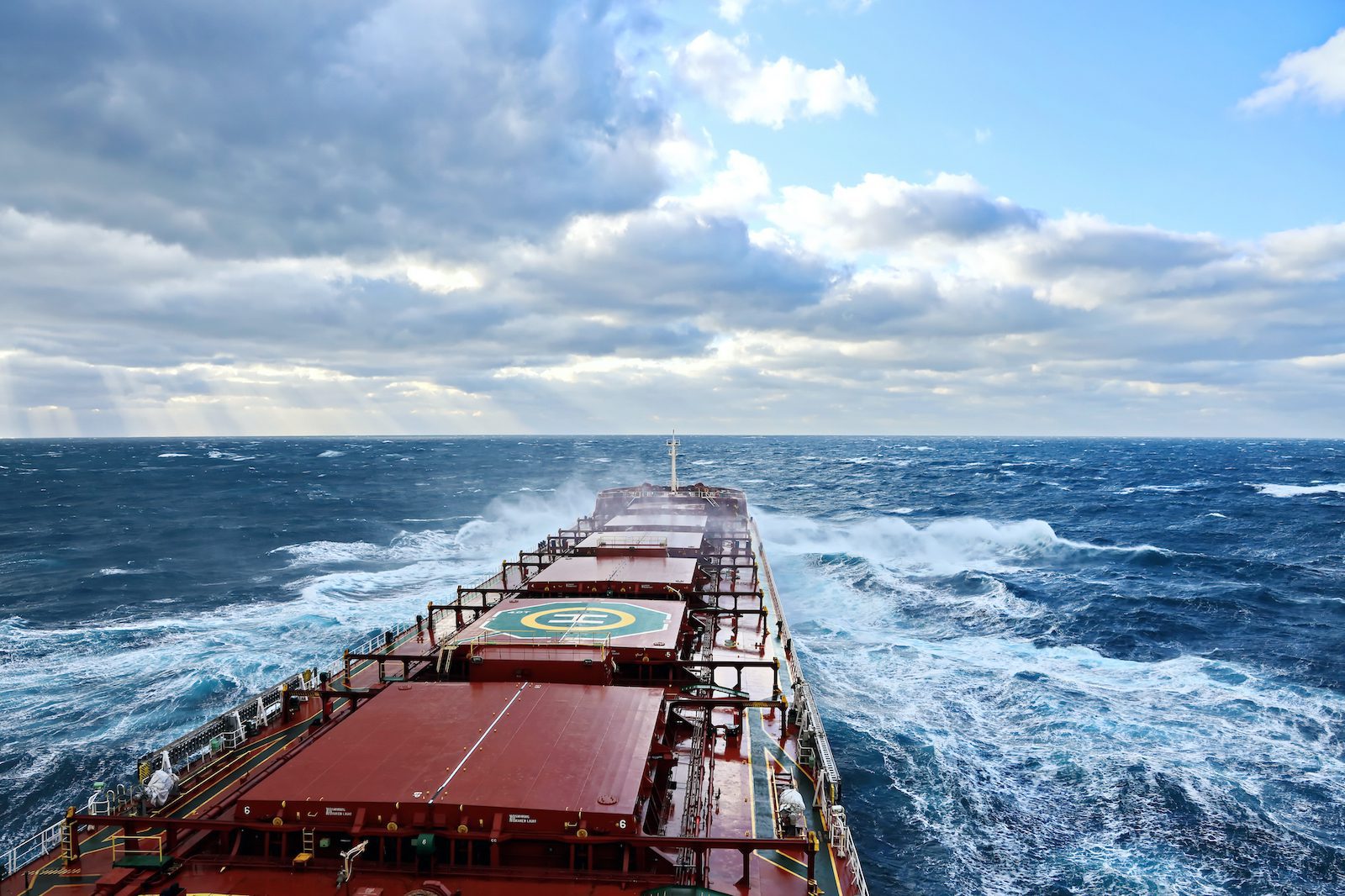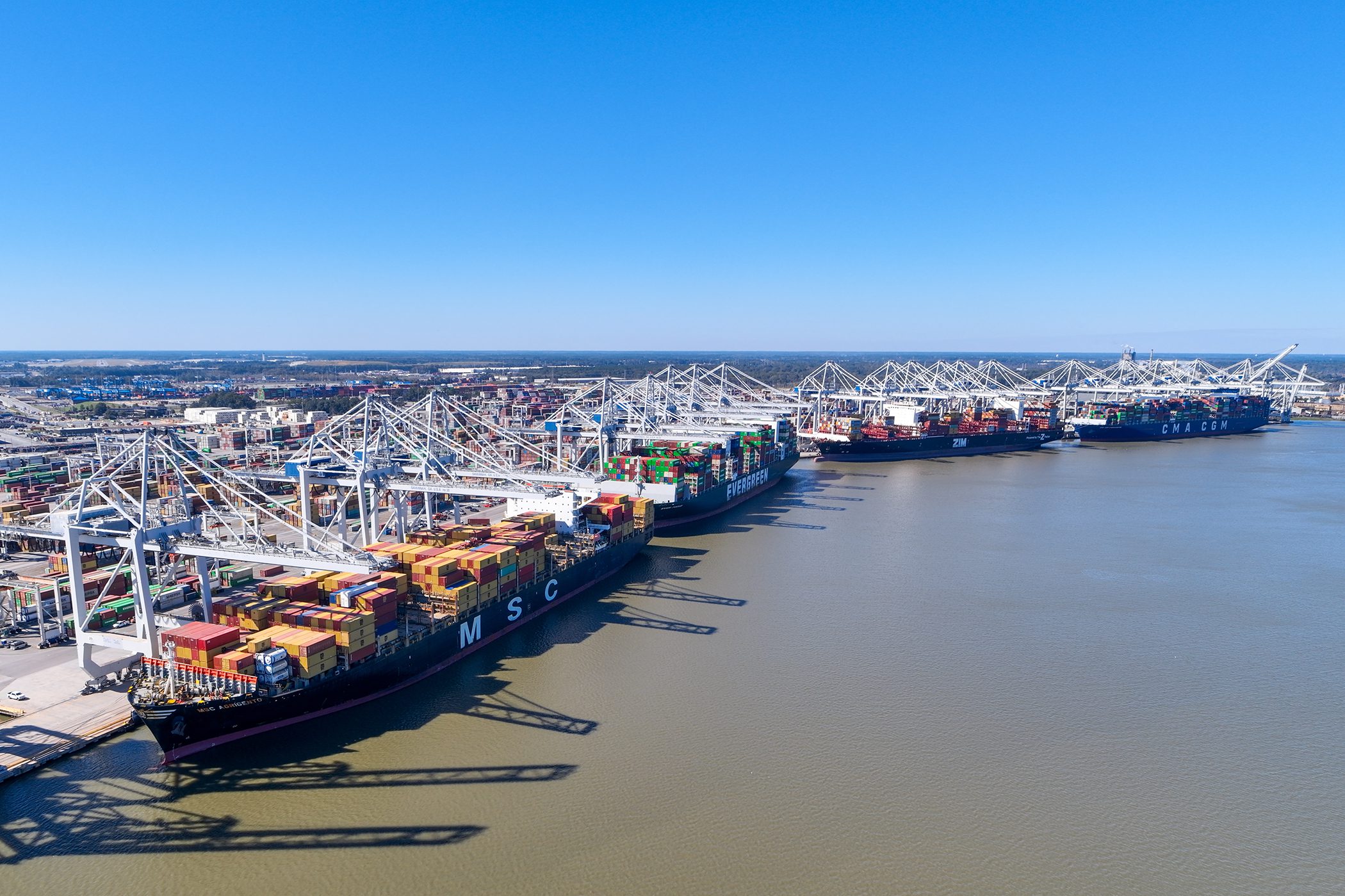By Barry Parkger (gCaptain) –
The tanker market session at Capital Link’s Maritime Forum in New York drew a standing-room-only crowd. Although market excitement has waned in recent months, panel members from the product/chemical tanker sector still see investor interest, according to session moderator Jorgen Lian, Oslo-based Head of Shipping Equity Research at DNB Markets.
Gernot Ruppelt, the newly appointed CEO of Ardmore Tankers (NYSE: ASC), noted that late autumn typically brings a seasonal uptick, “in November, typically 30% – 35%” based on historical data. He pointed to an upward-sloping freight futures curve (a “contango”) and charterer interest in period deals as “constructive” signs. “Seasonality is playing out—along a very high baseline,” he concluded.
Carlos Balestra di Mottola, CEO of d’Amico International, viewed the summer weakness—”with shares down 25% from previous highs”—as an opportunity for investors to trade shares and for companies to make investor-friendly moves such as share buybacks. “This summer, we had a bit more than normal seasonal weakness,” he noted, attributing it to unusual market strength in the first part of the year that gave way to a summer slump.
One development highlighted by di Mottola and other panelists was the “clean ups of crude tankers” (where vessels normally carrying crude oil switched to long-haul product trades, attracted by higher rates due to Red Sea disruptions).
James Doyle, Head of Investor Relations at Scorpio Tankers (NYSE: STNG), explained: “We’ve been tracking the Suezmaxes and VLCCs that had been taking clean products—the majority of them are now going back into the dirty trades.” He added, “That’s probably the first step, in addition to seasonality, where we will see an improvement in rates… we’re going to see refinery maintenance end, and we’re going to see the end of cannibalization of LR2s <larger product tankers> by crude tankers.”
Ted Petrone from Navios Partners LP (NYSE: NMM) analyzed “uncoated” (crude-carrying) tankers in the product trades, noting that the vessel count in 2024 was nearly double the 2023 level. He concluded, “A better crude <tanker> market will help the product tanker markets.” Di Mottola from d’Amico agreed: “We need a strong crude market to support product tankers… I see the crude tanker market having very strong fundamentals going forward.”
Examining market dynamics, including the crude side, the panel explored potentially upward sentiment. NMM’s Petrone discussed expectations regarding China, saying, “I think that the market got over-excited a few weeks ago… now it’s over-sold… If I were a charterer, I would be taking ships on period charters now.” Assessing the current situation and its implications, ASC’s Ruppelt said: “When you see a dip in oil prices, it really drives incremental ton-mile demand.” He also suggested that strengthening markets might induce commodity traders to “…keep barrels on the water for longer…”
Di Mottola, the d’Amico CEO, also addressed OPEC+ policies (possibly increasing production), an important factor in tanker market shipping volumes, though not the sole determinant of cargo demand. He stated: “Irrespective of what OPEC decides to do… there is going to be quite a substantial growth in oil supply next year.” Reflecting on previous tanker market rallies, he speculated that we might be heading towards an oversupply on the cargo side—potentially signaling healthy increases in vessel demand. “When that happens in a <tanker> market that’s already relatively tight, I don’t know what the ceiling could be,” he said. Moderator Jorgen Lian responded rhetorically: “There is no ceiling to shipping rates—isn’t that the secret sauce?”

 Join The Club
Join The Club










